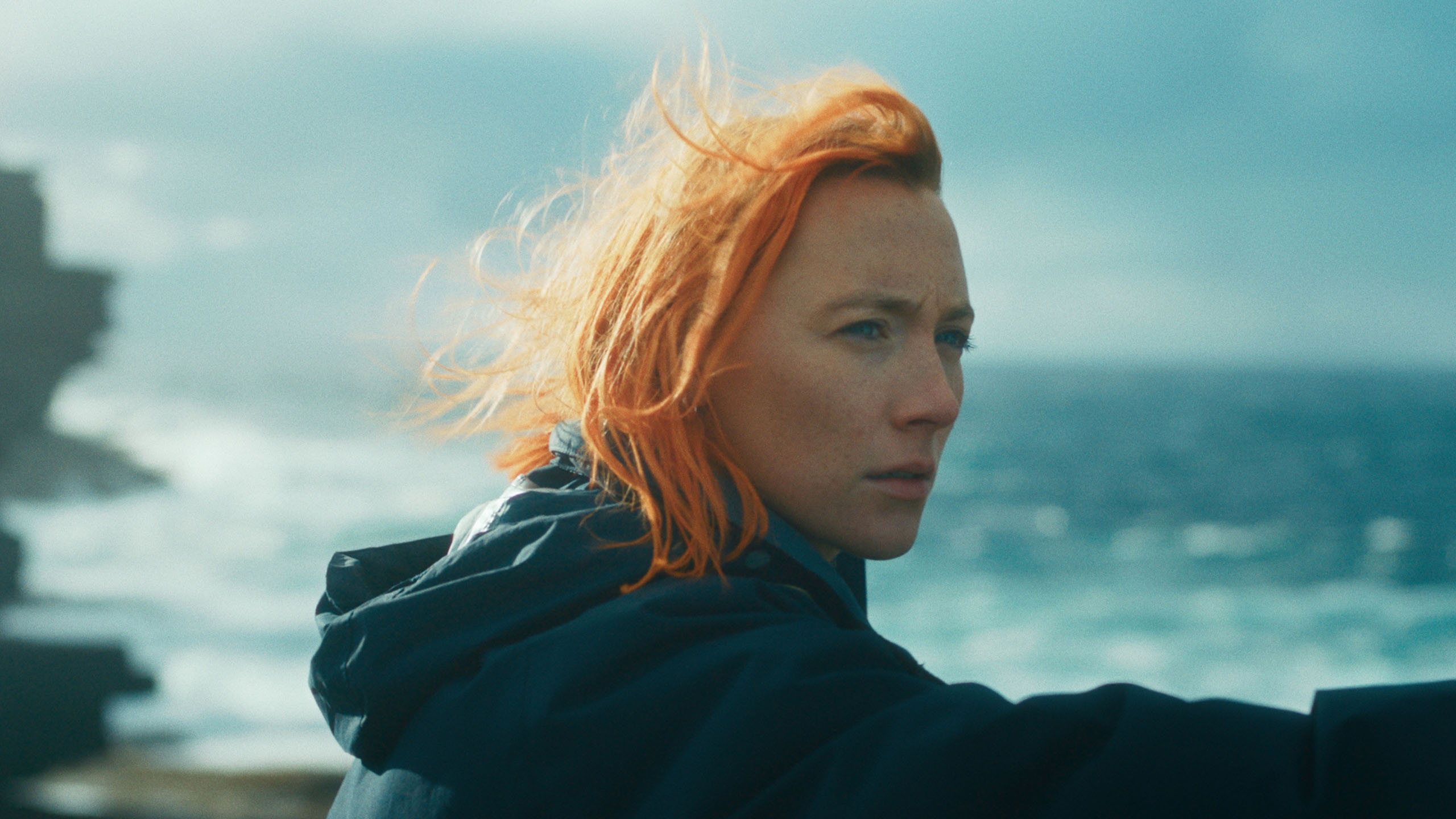
Sundance Film Review: The Outrun
Film Reviews
Sundance Film Review: The Outrun
Director: Nora Fingscheidt
Brock Media
Premiere: 01.19
One of the greatest virtues of The Outrun—a drama about alcoholism and mental illness from German director Nora Fingscheidt and based on a memoir by Amy Liptrot—is that it miraculously doesn’t feel like an after school special or a video a cop would make you watch in a sixth grade D.A.R.E. class. Rona (Saoirse Ronan, Little Women) is a young woman from Scotland’s Orkney Islands struggling with self-destructive alcoholism. In non-linear fashion we follow her through a cycle of victories and relapses as she seeks out a personal reset that will stick.
The film wisely circumvents the texture and clichés of cautionary tales about addiction by showing Rona’s struggle with a disease, rather than depicting it as a moral failure. She’s a frustrated young person whose emotional and professional ambitions have stalled out; she needs time and space to work on becoming functional again. At every step, though, she’s held back by the inherited, generational illness of an addiction that holds more control over her than she does over it. Ronan’s portrayal is lovely and honest, manifesting as an awkward and frustrating desperation for connection.
It sounds harrowing, and parts of it are, but The Outrun is mostly beautiful and otherworldly. Rona’s search for peace leads her further up into the Northern fringes of the British Isles, and Fingscheidt dedicates large portions of the film’s imagery to the Orkneys’ dramatic panoramas of sea, wind and sky. The sound design says as much as the visuals: the steady beat of waves, the sometimes deafening whisper of unimpeded wind, the cries of birds, sheep and seals. They’re the sounds of the Earth as the kind of functioning organism that Rona must try to become. Nature takes on the quality of a curative, not in a homeopathic or spiritual sense but in a cathartically emotional one.
It is strange though, and maybe to the story’s detriment, that The Outrun’s scenes unfold largely out of sequence. I was never really at a loss for when a scene was taking place, as clever changes in Rona’s hair style and color act as visual indicators, but the choice in structure sometimes feels unmotivated and disorienting. It feels a little like watching every episode of a TV series on shuffle—all of the beats are there somewhere, and it ends where it needs to, but it’s at the expense of a solid emotional through-line. Plenty of seals, though, so I liked that. –Daniel Kirkham
Read more of SLUG‘s comprehensive coverage of the 2024 Sundance Film Festival.
